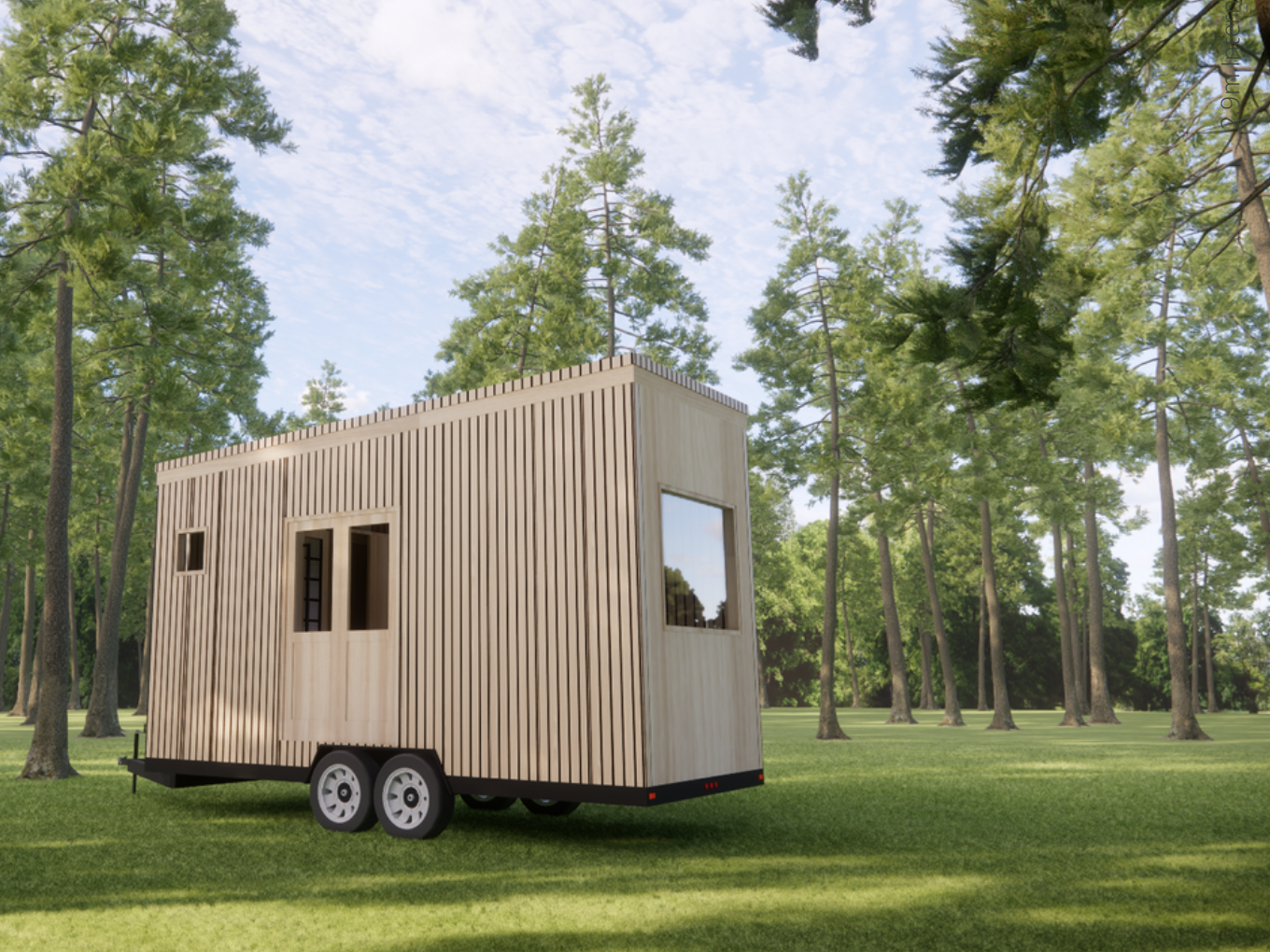In today’s fast paced world, where the need to find some space for yourself is paramount, and environmental concerns are ever-present, the demand for innovative building solutions has surged. Enter modular and portable buildings. A modern marvel revolutionising the way we can all think about construction and utilisation of space.
In this guide, we’ll be delving into the world of portable building planning permission, exploring whether or not it’s necessary, as well as a few expert tips for beginners.
What are Portable Buildings?
Portable buildings, also referred to as modular or prefabricated buildings are structures constructed off-site in a factory environment before being transported to their final destination ready for installation. These buildings come in various shapes, sizes, and designs, and offer flexible solutions for a wide range of potential issues.
One of the primary features of portable buildings is their ease of mobility. Unlike traditional brick-and-mortar structures, portable buildings can easily be relocated, virtually at the whim of the owner. This makes them an ideal choice for temporary or semi-permanent accommodation needs. From temporary homes and holiday homes, to offices, restaurants, bars, and cafes, the possibilities with portable buildings are practically endless.
The construction process of portable building involves prefabricated modules built in the factory. These sections are then transported to the site and assembled and pieced together, or installed as they are, usually using a crane. This streamlined process is not only excellent to reduce disruption to the site, but it also allows for much faster project completion when compared to more traditional building methods.
A portable building can, in essence be however you want it (as long as it’s not made using bricks and concrete foundations). It can be a purpose built shack on wheels, a cabin built to be slid in and out of place, or a rising star in the field — your portable buildings can be constructed out of one (or multiple connected) converted shipping containers.
Regardless of what your structure looks like, portable buildings are typically made from highly durable materials like steel or timber, ensuring maximum structural integrity and longevity. Additionally, advancements in the last few years have allowed suppliers to offer energy-efficient, eco-friendly portable structures — making it not only the convenient solution, but the sustainable one.
Planning Permission for Portable Buildings: When It Is and Isn’t Necessary
Now we have a basic understanding of what portable buildings are, let’s address the burning question: do you need planning permission for portable buildings on your property? The answer in the UK is generally yes. However, as is often the case with matters of planning permission, it’s not necessarily as straightforward as that.
If your structure will be in place for more than 28 days and has a surface area larger than 100m2 then planning permission will almost certainly be required. However, there are several other factors to take into account that could impact this, including:
- Temporary Use: If your portable home is intended for solely temporary use, such as for wild camping or as temporary accommodation, it may be exempt from planning permission requirements. What constitutes ‘temporary’ can vary depending on your local regulations so it’s important to double check.
- Agricultural or Forestry Use: A portable structure earmarked solely for agricultural/forestry use could be exempt from planning permission, particularly if this is directly related to the primary and intended use of the land it resides on.
- Temporary Events: A modular structure installed for an event or exhibition may not require planning permission. This will, of course, be dependent on the duration and size of the event in question.
- Structure Size: A smaller home, particularly one below the 100m2 threshold has a good chance of being exempt from planning requirements. It’s essential to consult your relevant regulations though prior to assuming.
- Permitted Development Rights: In England, it’s possible for your portable property to be allowed under Permitted Development Rights. This allows landowners to improve and extend their properties without automatically needing to apply for planning permission.
- Change of Use: If a portable structure is replacing an existing one, it may not be held to planning permission as long as it’s considered a change of use instead of a totally new development.
It’s vital to remember that planning regulations vary greatly between countries, even within the UK, as well as within local planning authorities. Consulting with the relevant authority or a dedicated specialist is recommended.
What Is Required for a Portable Building Planning Permission Application
So, your project is going to require a planning permission application, what now? If, like most, you’re daunted by the process, we’ve boiled down and simplified what’s expected of you into one handy list. A portable building planning permission application will generally require a number of key documents, including:
- Multiple copies of your application forms (usually five)
- Location, site, and block plans
- A signed certificate of ownership
- A signed agricultural holdings certificate
- Design and access statement
- The planning permission application fee (the amount varies depending on the scale of the project)
Portable Building Planning Permission Considerations For You
Portable buildings offer much greater flexibility and versatility compared to traditional structures. This can also suit various purposes, from providing temporary accommodation to acting as office spaces or a retail opportunity. However, navigating the planning process can be complex, no matter who you are.
Here’s how planning permission considerations can impact different types of owners:
Portable Building Planning Permission for Homeowners
For a homeowner weighing up their options and considering adding a portable structure such as a modular tiny home or a converted shipping container to their home, there are several factors at play regarding planning requirements.
As highlighted above, in some situations, portable buildings may fall under permitted development rights which would allow the homeowner to install without the need for planning permission. However, key considerations which could impact this include size, location, and intended use.
If this sounds like you, we recommend that you consult local planning authorities in order to determine whether planning permission would be required.
Portable Building Planning Permission for Agricultural Land Owners/Farmers:
Owners of agricultural land will often look to portable structures for a number of uses on their farm land. Common utilisations include:
- Storage
- Garage for farm vehicles
- Livestock housing
- Farm office
- Farm shop
Planning permission needs for a portable building on agricultural land will vary on key factors. These will notably include structure size, its intended use, location on the farmland, and if the structure will be permanent or not.
While some structures may be exempt from planning needs under agricultural development rights, it’s important to be aware of any and all limitations to this and seek guidance as and when necessary.
Portable Building Planning Permission for Commercial Companies
Commercial companies will use portable buildings to expand office space, set up temporary facilities, and accommodate team members during times of construction.
Considerations to keep in mind if you find yourself in this demographic include intended use, zoning laws, local planning policies, parking provisions, access routes, and environmental impact. Falling foul of any of these could influence the planning process.
Planning Permission for Portable Business Owners:
The owner of a portable business (food truck, pop-up show, mobile clinic, portable bar) will face unique planning permission considerations. If your structure is expected to move regularly around the country from premises to premises, event space to event space, then you could operate under temporary event exemptions.
However, this isn’t always the case as changes in land use or impacts to the area’s environment could scupper this. Contact planning authorities as early into the process as possible to ensure compliance from the outset and throughout.
Flexible and Luxurious Housing Delivered With Excellence and Convenience
Portable buildings offer flexible and efficient solutions for a wide variety of accommodations and space needs. Depending on your requirements, you may even be able to install your structure without the unnecessary burden of planning permission. However, as a general rule, obtaining prior approval is necessary.
This is particularly true if your desired structure is large in size or is intended to be permanent in nature. If you consider some of the key factors presented in this blog, you will be able to navigate the planning process more effectively and ensure total compliance with all regulatory requirements.
If you are considering adding a temporary structure to your land or your business portfolio, look no further than a Live Off Grid converted shipping container. Our containers offer unmatched levels of versatility, durability, sustainability, and luxury — all in one innovative and comfortable package.
Additionally, for land owners looking to expand their horizons, you now have the option of installing a totally transportable shipping container structure onto your land for commercial use. Particularly useful for farm owners, but applicable for virtually anybody with spare land to build on. To aid people on this mission, Live Off Grid have launched a brand new project, Off Grid Stays acts as a way you can market and sell your land to prospective holidaymakers. Get in touch to find out more about how you can diversify and boost your bottom line.
We’ve worked tirelessly in the design process to maximise the mobility of all of our converted containers. This means that they can provide an ideal solution for any need you might have. Why choose between flexibility, efficiency, or environmental consideration. Live Off Grid provides the ideal choice for anybody in the market for a temporary structure. Contact a member of our team today and find out more.



